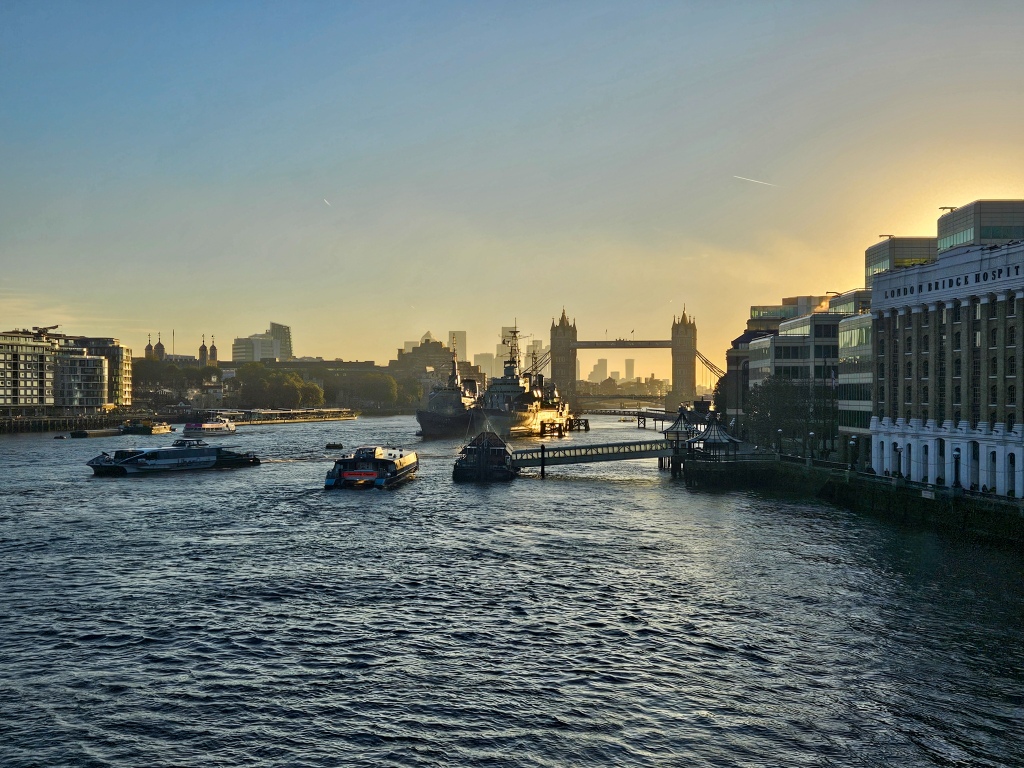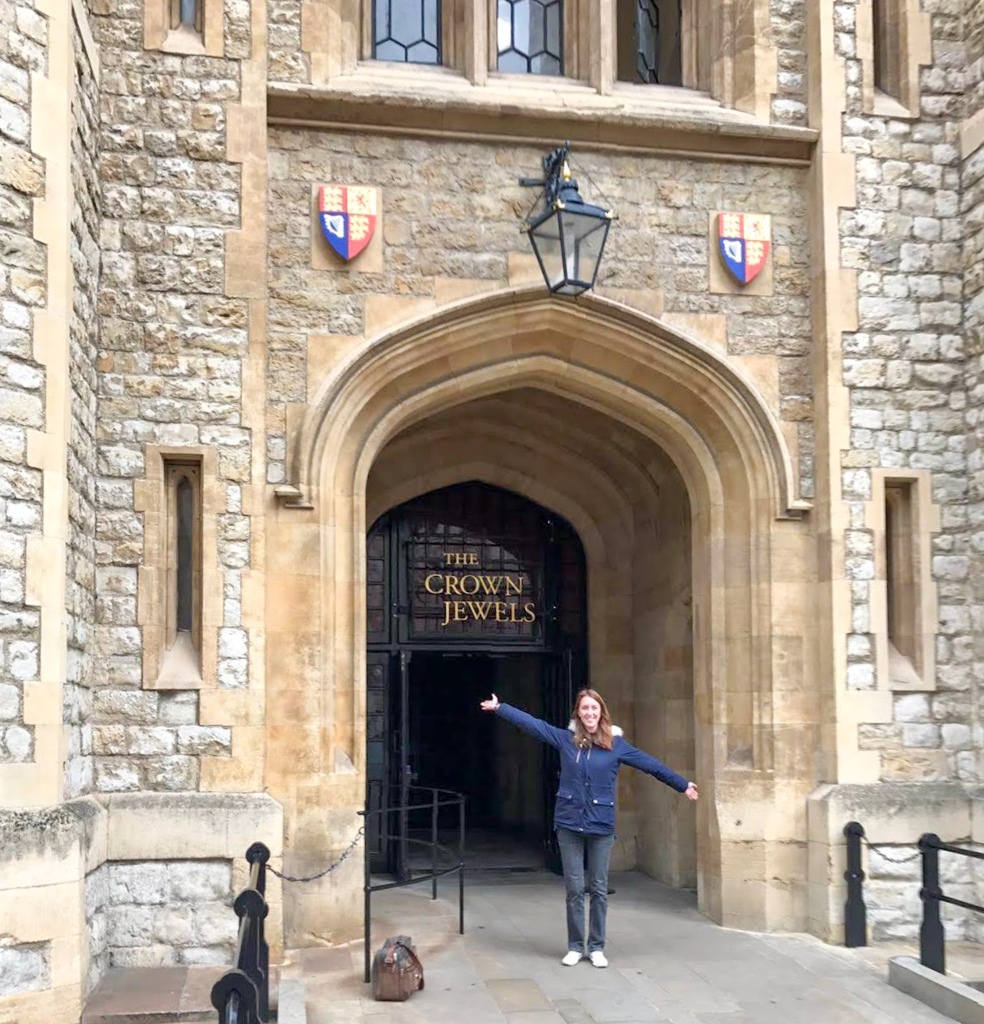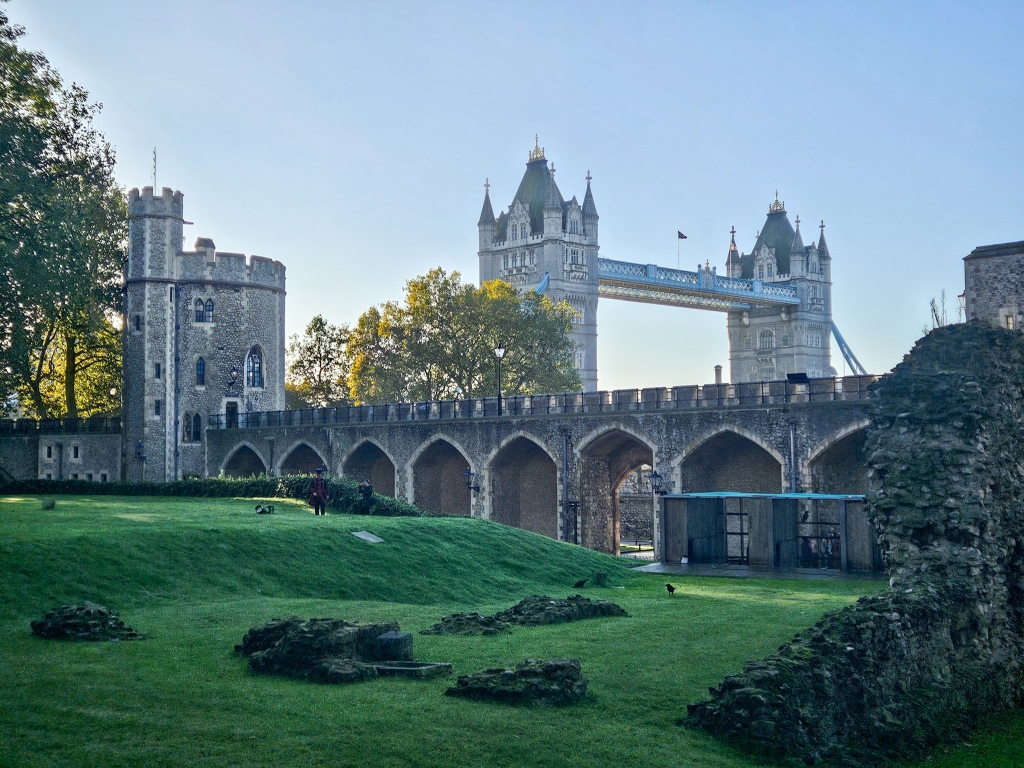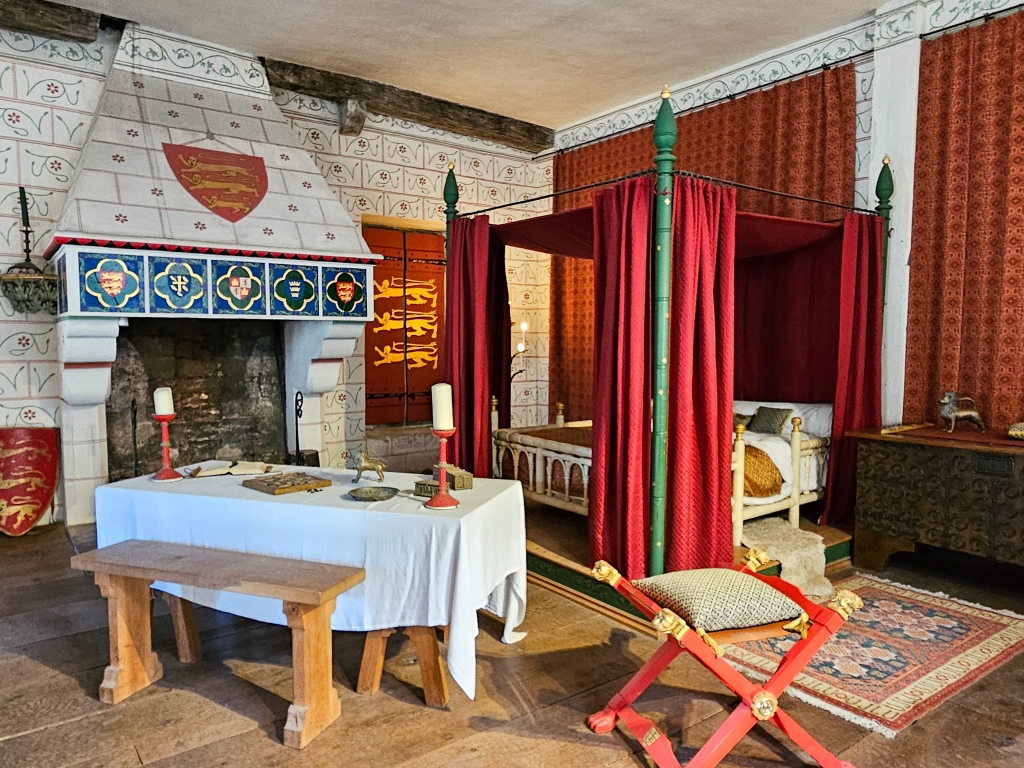The Tower of London is probably the capital’s best known attraction, and no visit to the city is complete without visiting its most historic castle. I absolutely believe it’s one of the best places in England and I can’t wait to show you more of it and help you plan your visit!
The castle dates back to 1070 when William the Conqueror started laying the foundations for his new home in recently conquered London, and it’s now home to almost 1,000 years of history ready to be discovered. I’ve now visited The Tower of London 4 times, and each time I discover something new – so I thought it was about time I helped you plan your trip to this wonderful place!

Contents
- Contents
- The Tower of London: Important Visitor Information
- Things to see & do at The Tower of London
- Additional London Information
The Tower of London: Important Visitor Information
Prices
- Members – Free
- Those on Universal Credit/Other Named Benefits – £1
- Adults – £34.80
- Child – Free (aged 0 to 4), £17.40 (5 to 15)
- Seniors/Students/Disabled – £27.70
I recommend buying tickets online direct on the Tower of London website in advance as getting tickets on the day is rarely possible.


Opening Hours & When to Visit
- 9am – 5.30pm Tuesday to Saturday
- 10am – 5.30pm Sunday & Monday
The best time to visit the Tower of London is in the 9am slot on a Tuesday, Wednesday or Thursday.
Over my last few visits, I have noticed a significant increase in visitor volume and now the only time where you can enter the castle with some peace and thinner crowds is if you’re queuing at 8.45am ready for a 9am entry. It gives about 45 minutes to head to Tower Green, in to see the Crown Jewels and then start walking around the Battlements before saving the White Tower and tower exhibits until last where crowds aren’t such an issue.


How long is needed at the Tower of London
There is so much to see and do at the Tower of London. To do a visit justice will take at least 2.5 hours, and you could easily spend 6 hours exploring if you want to read all the information in the museums. I recommend allowing 4 hours to be safe and not having to rush.
How to get to the Tower of London
The Tower of London is in the centre of London and I really recommend walking to it if you’re staying within 30 minutes, as you can stroll along the river and take in the views as you do – making a perfect start to the morning. If you’re not within walking distance, you can take the tube to Tower Hill, which lies on the Circle and District lines.


Other Visitor Tips
- Yeoman Warder’s Tour – A great thing to do on your visit to the Tower is to join a Yeoman Warder’s tour. They run every 30 minutes starting at 10am from the main entrance and give a good overview of the castle and some of its most interesting stories.
- Accessibility – The Tower of London isn’t an accessible castle, with dozens of steep spiral staircases so whilst there are plenty of staff on hand to help. wheelchair access is really limited.
- Café and Facilities – The New Armouries Café serves a range of hot and cold meals, snacks and drinks. Prices are quite expensive and quality is not that great, so I don’t recommend eating here. Also on site are public toilets, free Wifi and lots of volunteers to help. Please note, there is no left luggage so you cannot bring suitcases with you.


Things to see & do at The Tower of London
Outside the Tower
Start your visit off by heading around to the front of the Tower of London, along the river front, for some lovely views out to Tower Bridge and to see some of the grounds. You don’t need a ticket to do this and I recommend going at around 8.15-8.30am before your 9am entry slot to see it without the crowds.


Tower Green & Execution Site
Tower Green lies at the heart of the inner courtyard of the castle, beside the imposing White Tower. Around the Green are multiple homes, still lived in by the Tower’s Yeoman Warders (more on them later). The Green was also where 10 people were beheaded, and a memorial marks the spot where they lost their heads.

The most well known among those executed on Tower Green were three former queens of England, the most well known of which was Anne Boleyn (Henry VIII’s second wife) who was found guilty of adultery with 4 men including her brother. Catherine Howard, Henry’s fifth wife, was also beheaded here, again having been found guilty of adultery. The third queen to meet her end within the Tower was 16-year-old Lady Jane Grey. She was on the throne for just nine days, and was the innocent pawn in a failed military coup by her father-in-law, the Duke of Northumberland.


The Crown Jewels
Moving through Tower Green and you come to the Crown Jewels room which houses the nation’s most precious treasures, including the sacred Coronation Regalia. Comprising more than 100 objects and over 23,000 gemstones, the Crown Jewels are priceless and everything on show is the real thing, no fakes allowed.
The Crown Jewels have been protected at the Tower of London since the 1660s, where they have attracted visitors ever since, though you are not allowed to take photos of anything inside the Crown Jewels rooms so the photo below of the Crown is from the official website.


Battlements
Walking the Battlements is one of my favourite things to do at The Tower. On a crisp autumn morning there is nothing quite like the beauty of looking out at Tower Bridge and The Shard from the backdrop of an ancient castle.



The Ravens
It is said that the kingdom and the Tower of London will fall if the six resident ravens ever leave the fortress. Jubilee, Harris, Poppy, Georgie, Edgar and Branwen are today’s resident ravens and they fly all over the castle grounds – just don’t get too close to them as they can bite and be a bit aggressive.


The Fusilier Museum
The Royal Regiment of Fusiliers was formed on 20th June 1685, when King James II issued a Royal Warrant to raise an infantry force from the existing Tower of London Garrison, as a form of protection. The unit remained at the Tower for nearly 200 years, but later located out of central London. The regiment is now one of the most famous army regiments in England and survives to this day, having fought in dozens of battles from the Boer War to WW1 & 2 to the Korean War. The museum on site tells their stories, the battles they’ve fought in and showcases lots of medal collections too.

The White Tower
The White Tower is probably the highlight of any visit, after the Crown Jewels. As you climb up to the Tower, you’ll find a section of wall cut out where they discovered two skeletons which they assumed to be the ‘Princes in the Tower’; heirs to the throne of King Edward IV of England. Their father died in 1483 when they were aged 9 and 12, and they were lodged in the Tower of London by their uncle (and standing regent,) Richard. They were never seen again, and Richard ascended to the throne as Richard III. RIII is close to our hearts as a family, having grown up in Market Bosworth where Richard was defeated by Henry VII to end the War of the Roses and establish the Tudor dynasty. And we don’t buy the Princes in the Tower death story.



Once inside the White Tower, the main highlight is the ‘Line of Kings’, showcasing Kings’ armour over generations of Monarchs. You can also discover the castle armoury and the absolutely beautiful Chapel of St John the Evangelist – the most complete surviving example of early Anglo-Norman royal ecclesiastical architecture, built as a place of worship for William the Conqueror himself.



Medieval Palace & Traitor’s Gate
The Medieval Palace is one of the oldest parts of the Tower, laying at what was the heart of the castle in Medieval times. These were richly decorated and comfortable lodgings, grand enough for any medieval monarch. The Palace includes the royal bedchamber inside St Thomas’s Tower, which has been re-presented as it might have appeared in the time of Edward I (1239 – 1307) based on surviving descriptions.

Also in the Palace is the chapel is associated with Henry VI who died in 1471 while a prisoner in the Tower during the Wars of the Roses. One side said he died of melancholy after hearing his son had been killed in battle, but his supporters said he was stabbed to death while praying here. Beneath the Medieval Palace lies the infamous Traitor’s Gate, where prisoner’s were brought to the Tower of London via barge down the Thames.
Other Towers – Torture at the Tower, Imprisonment at the Tower & the Bloody Tower
Throughout the other many towers at the castle are a number of interesting exhibits. You can learn about torture, imprisonment and execution at the Tower of London with exhibits in multiple towers. Learn about the WW1 & WW2 spies who were executed here, including Carl Muller who was executed for being found to carry a lemon (used to make invisible ink), and learn about multiple torture devices which were infrequently used in the early period of the castle’s history.


You can also visit the Royal Beasts exhibit telling the stories of the lions, ostriches and tigers who once lived here – you can even read about the polar bear who fished in the Thames for his lunch! Cradle Tower also tells the story of Edward III’s private water tower and other towers hold exhibits on everything from WW1 at the Tower of London to a full reconstruction of Sir Walter Raleigh’s study from when he was held prisoner here (three times!) – he lived in relative comfort with his family and servants, but was still executed in 1618.

The Tower’s Mint
Edward I installed the Mint within the safety of the Tower’s walls in 1279 and until 1810, most of the coins in England were made here in a dedicated area that became known as Mint Street. Tampering with coins was treason, and forgers suffered a traitor’s death of hanging, drawing and quartering, while women were burned at the stake, or transported on one of the infamous convict ships, right up until the 1700s. No wonder there was less fraud than today!
Yeoman Warders
The Yeoman Warders are a stalwart of the Tower of London. having guarded it since Tudor times, when they were the King’s personal bodyguards. Today, the 32 men and women are all drawn from the Armed Forces, and are nicknamed ‘Beefeaters’. Today’s Yeoman Warders need to have at least 22 years’ military service, to have reached a certain rank within their service and to have been awarded the long service and good conduct medal. It’s no easy feat to become a Yeoman Warder!

One of the most well known tradition for the Beefeaters is the Ceremony of the Keys, which happens every night to close the Tower. You’ll hear echoes of ‘Halt! Who comes there?’, as they have done daily for over 700 years as the gates of the castle are locked for the night and the keys are delivered to the Monarch’s representative in the Tower.


I absolutely love the Tower of London and it is easily one of my favourite places in the whole city. Sometimes I like just walking by on a walk at lunch time (it’s about 20 minutes away from my office) and seeing people see it for the first time. On my last visit, I got chatting to an American man, dressed from head to toe in Minnesota Vikings kit – I asked him what he was doing in London and he said “I came to watch the Vikings’ NFL game, and I stayed to see a bit of the city. It’s the most incredible place I’ve ever been, and I was meant to fly home last weekend but have extended for 2 weeks”. I asked him why he loved it so much and without hesitation he exclaimed “it’s just all so OLD”. I love that The Tower of London has been a key place in England’s history for almost 1,000 years, and it’s pretty cool to be able to experience that. I’m glad Mr Minnesota thought so too.
Additional London Information
If you want to see more of what’s near the Tower of London, check out:
- The City of London Area Guide (post coming soon)
- St Paul’s Cathedral
If you want to see other parts of London more broadly:
- London 2 Day Itinerary (post coming soon)
- London 1 Week Itinerary
- Southwark Area Guide
- Bloomsbury & Kings Cross Area Guide
- Southbank Area Guide
- Shoreditch Area Guide
- Greenwich Area Guide
So with that, I wrap up one of my favourite posts that I’ve ever written. I love the Tower of London, and London more broadly, and I really hope that if you’re planning a visit this post was helpful for you. Stay safe and happy travelling!

Leave a comment